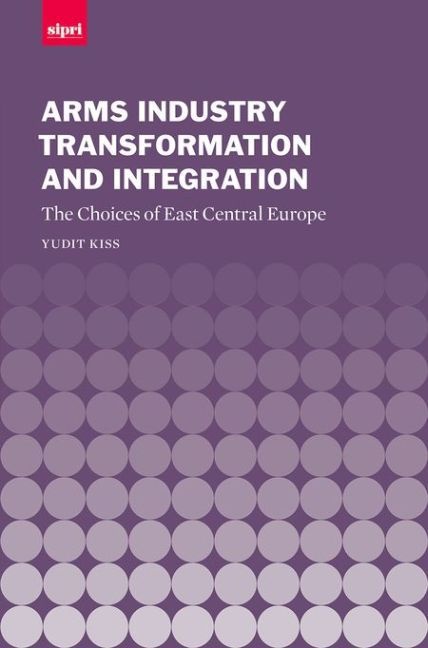Read more
Informationen zum Autor Yudit Kiss (Hungary) is an economist. She received her PhD from Karl Marx University of Economics, Budapest, in 1989. Since 1992 she has worked as an independent researcher, based in Geneva. From 1993 to 1995 she studied conversion and defence industry restructuring under a MacArthur Foundation grant. Her publications include The Defence Industry in East-Central Europe: Restructuring and Conversion (OUP 1997), Regional and Employment Consequences of the Defence Industry Transformation in East Central Europe (International Labour Office, 1999), Small Arms and Light Weapons Production in Eastern, Central and Southeast Europe (Small Arms Survey, 2004) and East-Central European arms industries: between consolidation and crisis, Contemporary Security Policy (August 2011). Klappentext The defence industry was one of the pillars of the classic command economy system in Central Europe. Since the early 1990s the sector has gone through dramatic changes. This report describes how the defence industry adjusted to the changed political and economic environment in both the domestic and international context. The comparative analysis of the post-cold war experience of six Central European countries - Bulgaria, the Czech Republic, Hungary, Poland, Romania and Slovakia, which joined in the first two waves of enlargement - provides valuable lessons for other countries in their processes of socio-economic transformation. Zusammenfassung The defence industry was one of the pillars of the classic command economy system in Central Europe. Since the early 1990s the sector has gone through dramatic changes. This report describes how the defence industry adjusted to the changed political and economic environment in both the domestic and international context. Inhaltsverzeichnis 1. Introduction I.: Post-cold war East Central Europe II.: The importance of the topic III.: Methodology 2. The post-cold war evolution of the arms industry I.: Drivers of the transformation of the arms industry II.: The new structure of the arms industry III.: The arms industries of East Central Europe: crisis and partial recovery 3. Poland: a qualified success story I.: Arms industry policy in the 1990s: protection II.: Arms industry policy in the 2000s: promotion III.: The arms industry IV.: Military expenditure and procurement policy V.: Recent developments VI.: Conclusions Appendix 3A. Polish company case studies I.: Bumars rise from a domestic company to a potential regional giant II.: ARP: an indigenous engine of development III.: PZL-Swidnik: succcess via international cooperation IV.: PZL-Mielec: a regional company that became an international player V.: The Euro-Park Mielec special economic zone and the Aviation Valley VI.VII.VIII.: The F-16 dealZM Mesko: profitable use of offset dealsZM Tarnów: a typical Polish company 4. Hungary: the twists and turns of transformation I.: Arms industry policy: liberalism with elements of protectionism II.: The arms industry III.: Military expenditure and procurement policy III.: Military expenditure and procurement policy V.: Conclusions Appendix 4A. Hungarian company case studies I.: Fegyver- és Gázkészülékgyár Ltd: coping without the state II.: Rába Jármuipari Holding NyRt: a winner III.: Dunai Repülogépgyár Rt: the history in a nutshell IV.: MFS 2000 Ltd: a typical Hungarian company V.: HM Currus Gödölloi Harcjármutechnikai Rt: an MOD company VI.: Pro Patria Electronics: an amphibian-like company in a turbulent environment VII.: The new Hungarian aviation industry 5. A comparison of Poland and Hungary I.: The size and the state of the economy and the arms industry II.: The arms industrys place in the economy III.: Defence industrial policy IV.: The Warsaw Pact heritage V.: The arms industrys links with ...

